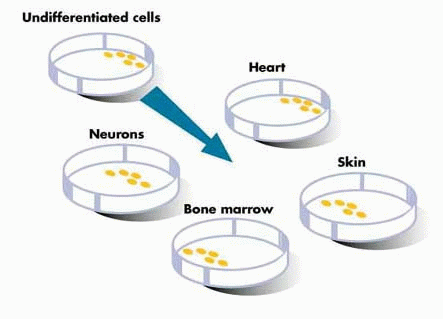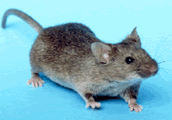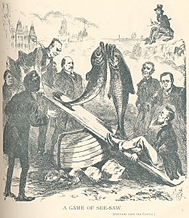Michael Fumento
Factual · Powerful · Original · Iconoclastic
Stem Cell Politics
January 01, 2004 · Michael Fumento · Hudson Institute · Biotech
Although supporters of federal funding for embryonic stem cell (ESC) research are often reluctant to admit it, the tremendous progress being made with adult stem cells (ASCs) could moot the debate that broke out in 2001 over such funding. It has long been known that stem cells from human bone marrow could develop into several types of mature blood and marrow cells, but it was also thought that this was all they could do. That is, you could not use a marrow cell to make a brain cell or a heart muscle cell. Moreover, it also wasn’t known that, in addition to cells in marrow, umbilical cords, and placentas, stem cells could be harvested from all over the body.
Many people argue, however, that ESCs may have greater potential to differentiate than ASCs-that, in scientific terminology, they are "more plastic." ESCs, they tell us, can ultimately be made into any type of mature cell in the body, whereas ASCs are much more limited in what they can become.
In fact, there is much evidence that ASCs may be far more plastic than once thought. Recently, Catherine Verfaillie and her colleagues at the University of Minnesota’s Stem Cell Institute found stem cells in human marrow that appear to have the potential to form all three of the embryonic germ layers from which all mature cells eventually develop: ectoderm, mesoderm, and endoderm. "I think Verfaillie’s work is most exciting and translatable into the clinical arena," said Dr. David Hess, a neurologist at the Medical College of Georgia in Augusta. "[ASCs] seem to give rise to every cell in the body. She seems to have a subpopulation with basically all the benefits of ES cells and none of the drawbacks." Verfaillie calls the cells "multipotent adult progenitor cells," and has isolated them from mice, rats, and people. They have already been transformed into cells of blood, gut, liver, lung, brain, and other organs.
Therapeutic stem cell use from bone marrow transplants has been common since the early 1990s. The first successful use of umbilical cord stem cell therapy dates back to 1988, and now some seventy different diseases, primarily forms of leukemia, are treated with umbilical cord stem cells. Like bone marrow, cord blood is rich in stem cells, which can invigorate a recipient’s immune system. Studies indicate that cord blood stem cells are even less likely to provoke immune system rejection than bone marrow stem cells, because the baby’s immune system hasn’t developed enough for recognition-it takes six to nine months for the immune system to develop fully after a baby is born. Furthermore, unlike marrow cells, cord cells are a cinch to collect. Originally, the only stem cells obtainable from cord blood were hematopoietic, meaning that they could grow into blood-forming tissue only. Boston-based ViaCell Inc., however, is pushing cord stem cells into becoming other types. They have already created more hematopoietic stem cells, plus mesenchymal and neural cells. Among the diseases its researchers are targeting are stroke, Lou Gehrig’s Disease (ALS), and diabetes. "What ViaCell is doing is creating an ethical source of abundant stem cells with great plasticity," said ViaCell CEO Marc Beer.
Reporters’ Biased Agenda

Stem cells are being extracted now from tissues throughout the body.
Despite this demonstrated promise, the journal Nature, in March of 2002, publicized two in vitro%20) (meaning "outside the body" or "petri dish or test tube") studies widely interpreted by the popular media as indicating either that ASCs are grossly inferior to what had earlier been believed or are even outright worthless. The Nature writers basically said that their studies showed that quite probably ASCs were not differentiating and multiplying at all; they theorized that the cell nuclei were merely fusing and that the resulting fusion gave the impression of a new, differentiated cell forming.
The media gobbled it up. Agence-Presse France headlined, "’Breakthrough’ in Adult Stem Cells Is Hype, Studies Warn." The Australian Associated Press (AAP) declared, "New Research Tips Debate on Stem Cells," and the Washington Post’s subhead flatly declared, "Adult Cells Found Less Useful than Embryonic Ones." It was all terribly damning — and terribly false.
Stanford’s Helen Blau countered with a big "So what?" in a Nature commentary (October 3, 2002), she noted that far from being "mere," "Cell fusion has long been known to achieve effective reprogramming of cells." In fact, her own laboratory had already been doing exactly that for twenty years. Far from showing that adult stem cell research is "hype," cell fusion may both complement and encourage the differentiation of adult stem cells that has already proved so valuable and promising.
The claim that cell differentiation was not occurring at all was simply bizarre in light of the myriad studies and therapeutic applications showing otherwise, including one that appeared in the journal Blood shortly thereafter (March 15, 2003). After showing that bone marrow stem cells can be converted into kidney cells, the study pointedly concluded, "The process does not involve cell fusion." "We found no evidence of nuclear material from two cells fusing into one cell," one of the co-authors emphasized to me. Tulane University’s Darwin Prockop told me, "It may well be that fusion is part of the healing process. But clearly we can take mesenchymal cells and differentiate them into various tissues such as bone or fat because it’s been done over twenty years."

Umbilical cords from live births are an excellent source of highly plastic stem cells.
Evidence continues to pour in demonstrating that the fusion phenomenon was grossly overstated. In the March 29, 2003, edition of The Lancet, researchers documented a study that looked at cheek cells from five living women who had received bone marrow transplants from their brothers several years earlier. They found cells containing the male Y chromosome, a sign that the donor’s marrow stem cells had indeed differentiated into cheek cells for the recipient. Moreover, the group found almost no evidence of fusion among the cells in the cheek. Of the 9,700 cells examined in the study, only two showed signs of possible fusion.
Just months later it was Nature’s prime competitor, Science, that was attempting to show that the earth really is flat after all, first with a letter in which researchers from the Baylor College of Medicine claimed that they had earnestly tried but failed to find bone marrow cells that had differentiated into brain cells, and later with a paper claiming to show that blood stem cells replenished marrow but appeared unable to create other tissues.
This second study evoked headlines such as United Press International’s "Promise of Adult Stem Cells Put in Doubt" (September 5, 2002). The two Science pieces hardly justified a headline implicating all ASCs; nonetheless, they would have constituted a real setback if true. "Blood-forming stem cells from adults make blood," lead researcher Irving Weissman told UPI. Casting aside the usual cautionary scientific terminology of phrases such as "it appears" or "evidence indicates" or "our particular study has found," Weissman declared, "They [the cells] don’t make brain; they don’t make heart muscle or any of these things." However, any good scientist-and numerous critics of Weissman have told me that he is an excellent scientist-knows that a single study never proves anything. Weissman certainly knows that: a study published in Nature Medicine in November 2000 showed the opposite to be true. In that case, such cells rebuilt liver tissue when injected into mice. It is unlikely, moreover, that he did not know about that study — he was listed as a lesser co-author.

Bone marrow stem cell have been made into kidney cells in a process that clearly doesn’t involve fusion.
According to Blau, neither of the two ASC-doubting studies was worthy of publication in Science or anywhere else. The Baylor study, she noted in a letter to the magazine (published October 11, 2002), failed to detect not only neurons but also something far more readily detectable, called microglial cells. Yet, she noted, "at least twenty reports over the past fifteen years have shown that bone marrow transplantation results in readily detectable replacement of a large proportion of microglial cells in the brain. If they couldn’t see those, how could they possibly see neurons?" It would be like failing to detect a tiny virus under your microscope when you also failed to see a gnat that accidentally got trapped between the slides. Either your microscope is faulty or you simply don’t know how to use it.
"As to Weissman’s paper, where you look and how you look determines what you see, and he doesn’t define where he’s looking," Blau said. "Our own experiments have shown there can be a thousand-fold [difference in the] frequency of stem cells depending on where you look." She also noted that his experiments cannot be replicated because he didn’t say where he looked. "You could replicate ours, but he did not," she said. "The other false assumption he made was to look at a fraction of marrow, the hematopoietic part, and he looked in absence of any damage to the body, yet these cells are damage repair cells." In other words, one shouldn’t think it remarkable that no ambulance shows up when there’s no need for one.
Scientists’ Ulterior Motives
One possible explanation for Weissman’s strange findings is evident. "Weissman has made it his mission to show adult stem cells don’t have any potential," said Hess, who studies the use of bone marrow cells as a way of treating strokes. A year before his Science report, Weissman had admitted to the National Journal that he was an advocate of federal funding for embryonic research. Six months before publication, he called for such funding in congressional testimony. Weissman is highly influential. His views of stem cells have been quoted in literally hundreds of news stories over the last couple of years. In May, 2002, he was named California Scientist of the Year; eleven previous recipients have gone on to win the Nobel Prize.

Irving Weissman puts his mouth where his money is.
What readers are virtually never told is that Weissman has made millions of dollars through three companies he founded-Systemix Inc. (now incorporated into another firm), Celltrans Inc., and StemCells Inc. — all of which experiment with ESCs (see Neil Munro, "Doctor Who?" Washington Monthly, November 2002). Weissman notes that some of the work from these companies has been on ASCs, but this claim does not exculpate him from bias because ASC work is doing just fine without outside help. It’s the ESC experiments and the promise of ESC work that need the hype that Weissman so willingly provides. The depth of Weissman’s involvement in ESC work only became apparent to the public in December of 2002, when Stanford University announced a new Institute for Cancer/Stem Cell Biology and Medicine with Weissman as director. The sole purpose of this institution is to use nuclear transfer technology to develop ESCs for research. ASCs need not apply.

Dr. David Hess: "Weissman has made it his mission to show adult stem cells don’t have any potential."
Weissman is far from alone in pretending to be — or perhaps more importantly in being portrayed as — a disinterested party when in fact he’s a warrior for ESCs. Not surprisingly, all of this has tremendously affected popular media coverage of stem cells. When an ESC hiccups, it makes page one, but reports of ASCs actually saving human lives are often ignored. In mid-2001, for example, it shook the media world when scientists at the University of Wisconsin medical school announced that they had succeeded in turning human embryonic stem cells into blood cells. It was newsworthy in that it was the first published report to show that the cells could be turned into other human tissues, but as the lead researcher Dan Kaufman admitted, "I don’t want to give false hope to anybody that we’re able to treat cancers or blood disorders now." For all the media coverage of this event, one would never know that literally three decades earlier medical journals had been publishing studies about the ability of ASCs to do the same thing in human bodies, nor that those cells are being used to treat cancers and blood disorders now and have been routinely doing so since the 1980s. Likewise, many lengthy, detailed articles on the promises of stem cells keep the reader ignorant of the reality that ASCs even exist.
Some scientists have become quite dismayed at this disparity of coverage. In a commentary in the Journal of Cell Science in February 2003, British researchers noted that "despite such irrefutable evidence of what is possible, a veritable chorus of detractors of adult stem cell plasticity has emerged, some doubting its very existence, motivated perhaps by more than a little self-interest." Even scientists who strongly favor ESC funding readily admit that the issue has been highly politicized, with ASCs getting the short end of the stick from research publications, the popular media, and the scientific community. Blau and Propock are among them, as is Patricia Zuk, who works with Marc Hendrick at UCLA in differentiating stem cells from liposuctioned fat. "Certainly it’s politicized," says Zuk.
The problem is that the research pie is limited. After years of tremendous growth, the budget of the largest federal grant-maker, the National Institutes of Health (NIH), has leveled off. "NIH has a lot of discretion into what they can fund," says Hess, and although the NIH certainly can distinguish between real science and hype, to the extent that the public and the people on Capitol Hill holding the purse strings become convinced that ASC research is essentially worthless and ESCs have all the promise, money is more likely to flow to ESC research. "Everybody is fighting over the same pie, and there’s a lot of pressure on NIH to give these scientists [those working with embryonic cells] what they want. And what they want is literally billions of dollars," said Hess.
ASCs’ Continuing Promise

Non-embyronic stem cells have been used in humans for decades; embryonics have just entered rodent testing.
Ironically, much of the pressure for government funds for ESCs is coming precisely because ASCs keep appearing more and more promising, especially in the short term. "Adult cells are far closer to commercial application, which is crucial to venture investors," wrote physician Scott Gottlieb, now with the U.S. Food and Drug Administration (FDA), in a piece for the American Spectator ("Adult Cells Do It Better," June 2001). As Gottlieb explained it, "Given the long lead times necessary to gain approval for new medical technologies, if a company can’t get significant results in four to six years, it’s generally beyond the scope of a venture capitalist’s interest." In addition, he writes, "venture capitalists look for a ’technology platform’ broad enough to support multiple indications for the same product. That way, if a company fails with one application, there’s plenty of room to develop other therapies that can take advantage of the previous research. While the embryonic cells are rumored to have broad potential, so far only adult stem cells have demonstrated wide uses." Some have tried to blame the lack of capital going to embryonics on President Bush’s decision to limit the number of cell lines available for federally-funded research, but Gottlieb’s article appeared several months before the Bush announcement.

ESC advocates believe research funds are a see-saw; the worse non-ESC cells look the better the ESCs look.
Basically, we’re looking at a political seesaw. If the value of ASCs appears to rise, that of ESCs falls in comparison. Thus, those desperate to see embryonic research funded feel impelled to denigrate the value of ASCs even to the absurd length of denying their existence. And with every breakthrough in non-embryonic research comes the need to turn up the volume of the disinformation. Private money isn’t fooled by any of this, but the government can and does make grants based on political fashions. Numerous companies and individual researchers have become desperate for those grants.
Nevertheless, the list of stem cell researchers who believe that adult stem cells may give us everything we need is long and growing. Dr. Adam J. Katz, a member of one of the research teams that spun fat into body tissues, has declared, "This discovery potentially could obviate the need for using fetal tissue." Added Katz, who works at the Division of Plastic and Reconstructive Surgery at the University of Pittsburgh School of Medicine, "We don’t yet know the limits for stem cells found in fat. So far, we have seen promising results with all of the tissue types we have examined." An outside researcher commenting on Katz’s work, Eric Olson of the department of molecular biology at the University of Texas Southwestern Medical Center in Dallas, noted that almost "every other week there’s another interesting finding of adult cells turning into neurons or blood cells or heart muscle cells."

If Christopher Reeve walks again, it will have nothing to do with embryonic stem cells.Ira Black, Chairman of the Department of Neuroscience and Cell Biology at the UMDNJ-Robert Wood Johnson Medical School in New Jersey has said his discovery that all sorts of cells could be teased into becoming neuronal ones, "essentially circumvents all the ethical concerns with the use of fetal tissues." Markus C. Grompe, a professor of molecular medical genetics at Oregon Health and Science University in Portland, said the same thing after one of the previously mentioned liver study results came out: "This would suggest that maybe you don’t need any type of fetal stem cell at all-that our adult bodies continue to have stem cells that can do this stuff."
No honest researcher of stem cells of any type will deny that if stem cells are to help relieve the suffering of the many people with ailments such as those affecting celebrities Michael J. Fox and Christopher Reeve in the next few years, it will be those of the adult variety. To the extent that adult stem cell research loses funding or loses researchers who become demoralized by the full-court press being waged against them in both the scientific and popular media, it will be the ESC advocates who are preventing those cures.
The stem-cell controversy is one that technology can render obsolete, but only if politics stands down and lets ASC researchers do their work.
